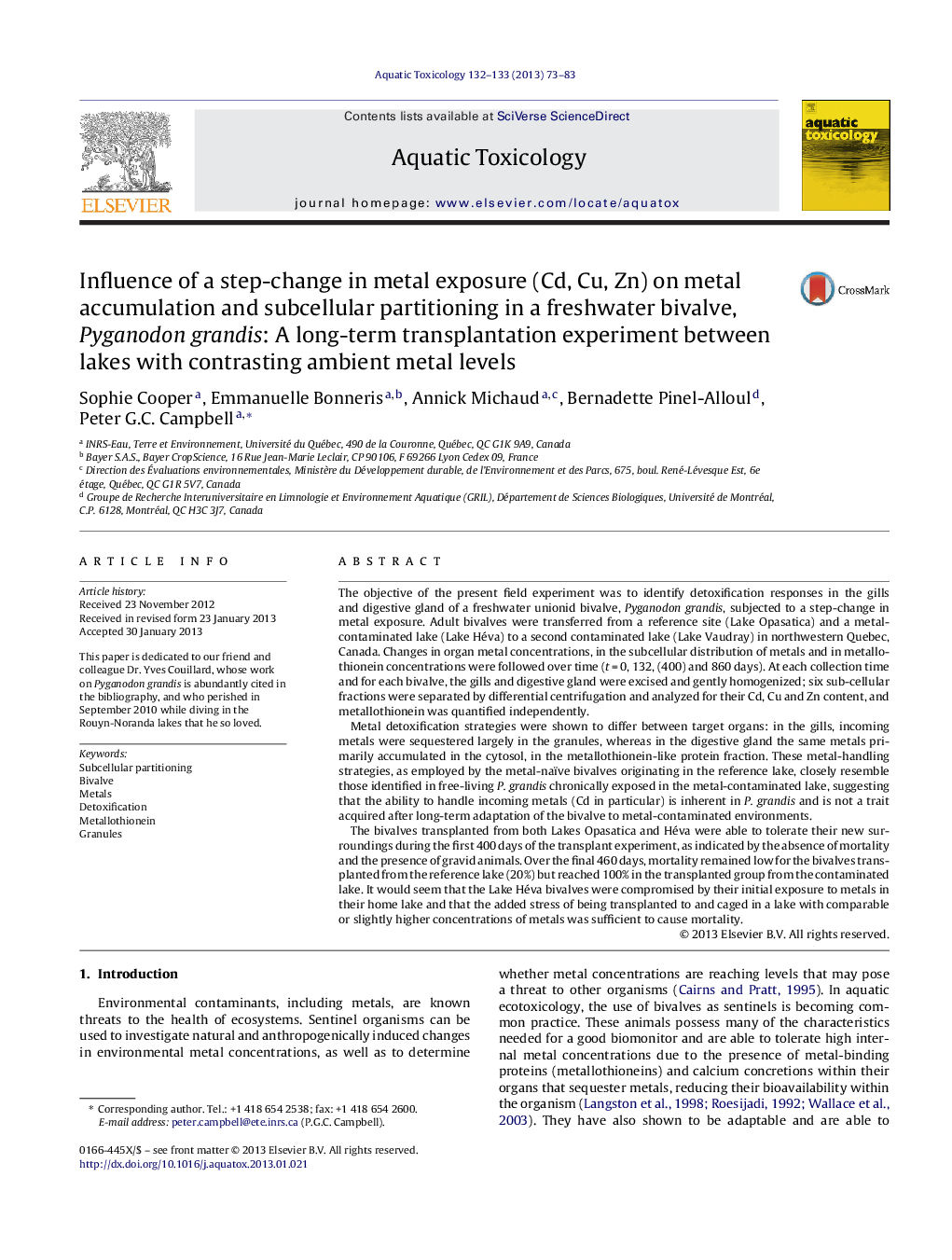| Article ID | Journal | Published Year | Pages | File Type |
|---|---|---|---|---|
| 4529486 | Aquatic Toxicology | 2013 | 11 Pages |
The objective of the present field experiment was to identify detoxification responses in the gills and digestive gland of a freshwater unionid bivalve, Pyganodon grandis, subjected to a step-change in metal exposure. Adult bivalves were transferred from a reference site (Lake Opasatica) and a metal-contaminated lake (Lake Héva) to a second contaminated lake (Lake Vaudray) in northwestern Quebec, Canada. Changes in organ metal concentrations, in the subcellular distribution of metals and in metallothionein concentrations were followed over time (t = 0, 132, (400) and 860 days). At each collection time and for each bivalve, the gills and digestive gland were excised and gently homogenized; six sub-cellular fractions were separated by differential centrifugation and analyzed for their Cd, Cu and Zn content, and metallothionein was quantified independently.Metal detoxification strategies were shown to differ between target organs: in the gills, incoming metals were sequestered largely in the granules, whereas in the digestive gland the same metals primarily accumulated in the cytosol, in the metallothionein-like protein fraction. These metal-handling strategies, as employed by the metal-naïve bivalves originating in the reference lake, closely resemble those identified in free-living P. grandis chronically exposed in the metal-contaminated lake, suggesting that the ability to handle incoming metals (Cd in particular) is inherent in P. grandis and is not a trait acquired after long-term adaptation of the bivalve to metal-contaminated environments.The bivalves transplanted from both Lakes Opasatica and Héva were able to tolerate their new surroundings during the first 400 days of the transplant experiment, as indicated by the absence of mortality and the presence of gravid animals. Over the final 460 days, mortality remained low for the bivalves transplanted from the reference lake (20%) but reached 100% in the transplanted group from the contaminated lake. It would seem that the Lake Héva bivalves were compromised by their initial exposure to metals in their home lake and that the added stress of being transplanted to and caged in a lake with comparable or slightly higher concentrations of metals was sufficient to cause mortality.
► We transferred freshwater bivalves from a reference lake to a Cd and Zn contaminated lake. ► Changes in metal accumulation and subcellular partitioning were followed over time (up to 860 d). ► Metal detoxification strategies differed between target organs (gills vs. digestive gland). ► The ability to handle Cd is inherent in P. grandis, not a trait acquired after long-term adaptation.
